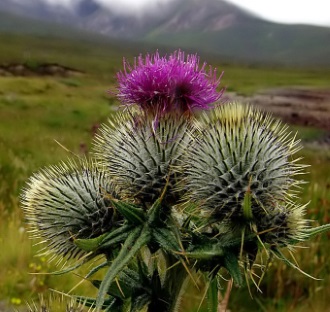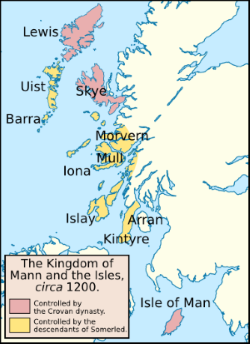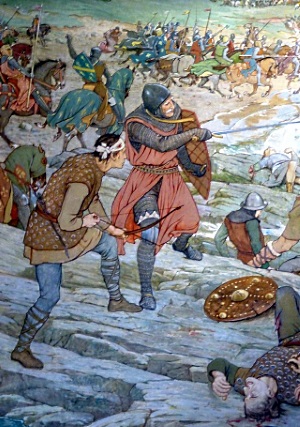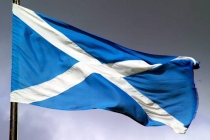The Thistle - Scotlands Proud Floral Emblem

The purple thistle has been Scotland's national emblem for centuries. Amongst the identifiable symbols of things associated with Scotland the thistle probably ranks alongside tartan. Heather is also thought of as a symbol of Scotland and wearing a sprig of heather is believed to bring good luck. However, the thistle is used by all kinds of organisations across Scotland as an emblem. It has also been seen as a royal symbol since James III used it on silver coins in 1470. James III (10 July 1451 – 11 June 1488) was proclaimed King of Scotland at the age of 8, following the death of his father James II. He was killed at the Battle of Sauchieburn in Stirlingshire on 11 June 1488. Common throughout the highlands, islands and lowlands of Scotland, the thistle has earned a special place in the heart of Scottish people.

There are a number of legends about why this purple, prickly-leaved plant, which can grow to a height of five feet, became the emblem of the Scottish nation. One such legend stems from the conflicts that took place between Scotland and Norway. There had been Viking interventions into Scotland and the surrounding islands since the 8th century AD. The Northern Isles of Shetland and Orkney were known to the Norse as Norðreyjar. The Southern Isles forming the Kingdom of Mann and the Isles (sometimes known as The Kingdom of the Isles) consisting of the Hebrides, the islands in the Firth of Clyde and the Isle of Man were known as Suðreyjar..
For centuries the Norse - Gael kingdoms of the Hebrides and Isle of Man came under the influence of Norway, as did the Northern Isles of Shetland and Orkney. Both King Alexander II of Scotland in the 1240’s and then later his son King Alexander III tried to purchase, then when this failed attempted military force to gain the Isles. King Hákon Hákonarson of Norway (1204 to 1263) sought to defend the lands against the expanding power of Scotland. It was the Treaty of Perth agreed on 2nd July 1266 between Norway and Scotland that sought to end these conflicts. Under the treaty Scotland was given sovereignty of the Hebrides and Isle of Man upon agreement of payment to Norway. At the same time Scotland recognised Norwegian sovereignty over Shetland and Orkney. Those Northern Isles did not become part of the Kingdom of Scotland until 1471. Norwegian law was not abolished in Shetland until 1611 and the Norse based language of Norn continued in common use for over two centuries after that.

It was during the many years of conflict between Scotland and Norway that one such legend involving the importance of the thistle as an omen of good fortune for Scotland emerged. In particular the Battle of Largs in the reign of King Alexander III (4 September 1241 – 19 March 1286). Largs (Scottish Gaelic: An Leargaidh Ghallda) is a town on the Firth of Clyde in North Ayrshire (Scottish Gaelic: Siorrachd Àir a Tuath) near where the battle took place in 1263. The battle itself was an indecisive one and was fought during the Norwegian expedition in 1263. This was part of King Hakon Hakonarson of Norway’s campaign to reassert Norwegian sovereignty over the western seaboard of Scotland. This was fought in a period when Alexander II and his son Alexander III were trying incorporate that region into Scotland.
During the campaign storms forced some of the ships onto the beach at Largs, where a force of Norwegian fighters landed. The legend is that after they landed, the Norsemen came upon a group of Scottish warriors. In order to take the warriors by surprise under the cover of darkness the Norwegians took off their footwear to creep up on the unsuspecting Scottish. However, the ground was covered with thistles and as they crept barefoot towards their prey one of the advancing Norsemen stood on a thistle. He shouted in pain and the Scottish were alerted to their presence, so saving them from the attempted ambush. In recognition of the part played by the humble thistle it was adopted as Scotland's national emblem. There is no historic evidence to back up this story, but it’s a good tale. Although there is some question as to which species of thistle claims the title of the national symbol, nevertheless the thistle has a particular beauty and continues to stand proud as Scotlands floral emblem.
Further Reading
Celts and Vikings - Scandinavian Influences on the Celtic Nations
- Scottish
- English
- Log in to post comments





